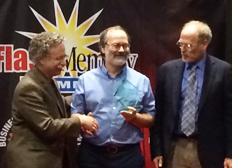Imagine evaporating your existing file server into the cloud with the same experience and level of control that you currently have on-premises. On October 1st, ESF will host a live Webcast that introduces the concept of Cloud File Services and discusses the pros and cons you need to consider.
There are numerous companies and startups offering “sync & share” solutions across multiple devices and locations, but for the enterprise, caveats are everywhere. Register now for this Webcast to learn:
- Key drivers for file storage
- Split administration with sync & share solutions and on-premises file services
- Applications over File Services on-premises (SMB 3, NFS 4.1)
- Moving to the cloud: your storage OS in a hyperscalar or service provider
- Accommodating existing File Services workloads with Cloud File Services
- Accommodating cloud-hosted applications over Cloud File Services
This Webcast will be a vendor-neutral and informative discussion on this hot topic. And since it’s live, we encourage your to bring your questions for our experts. I hope you’ll register today and we’ll look forward to having you attend on October 1st.










Leave a Reply